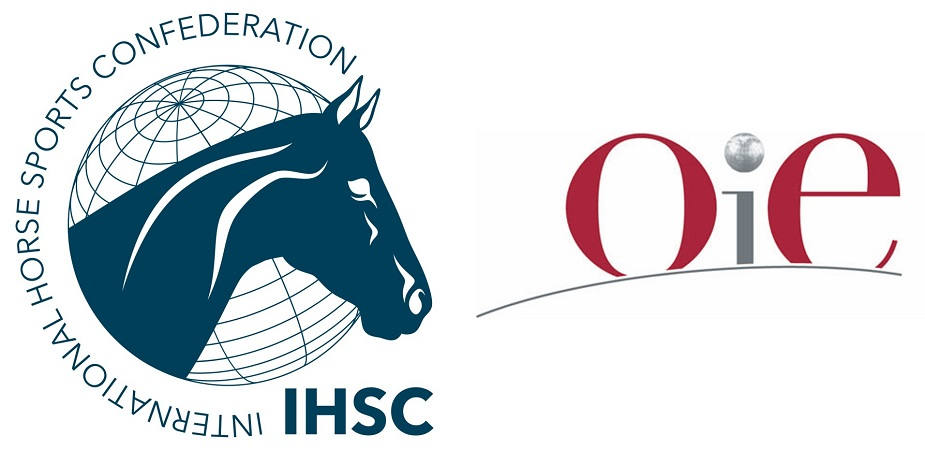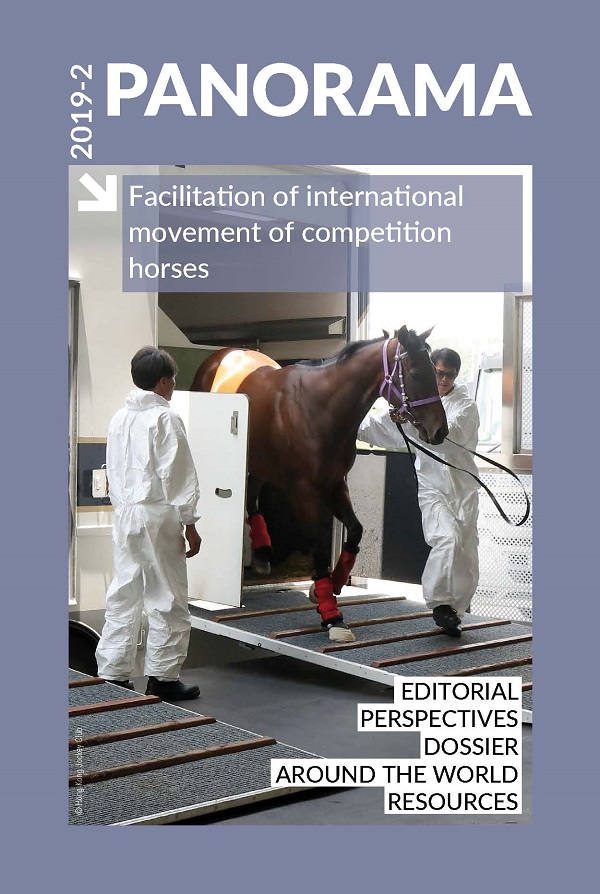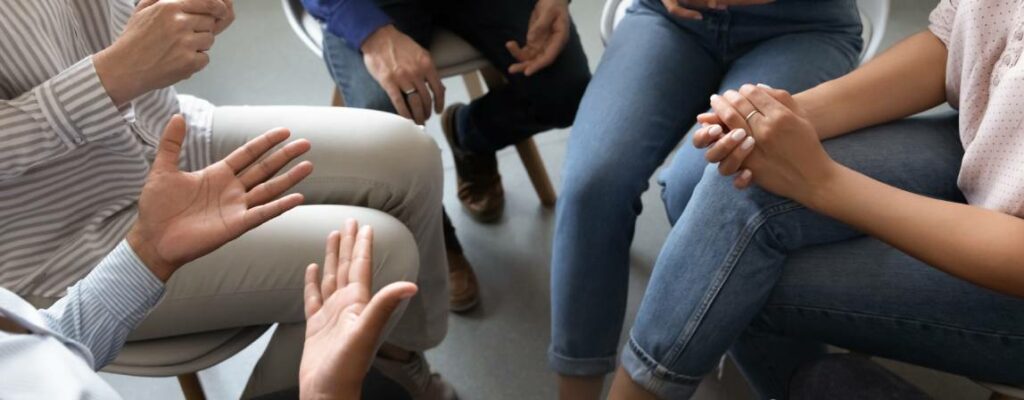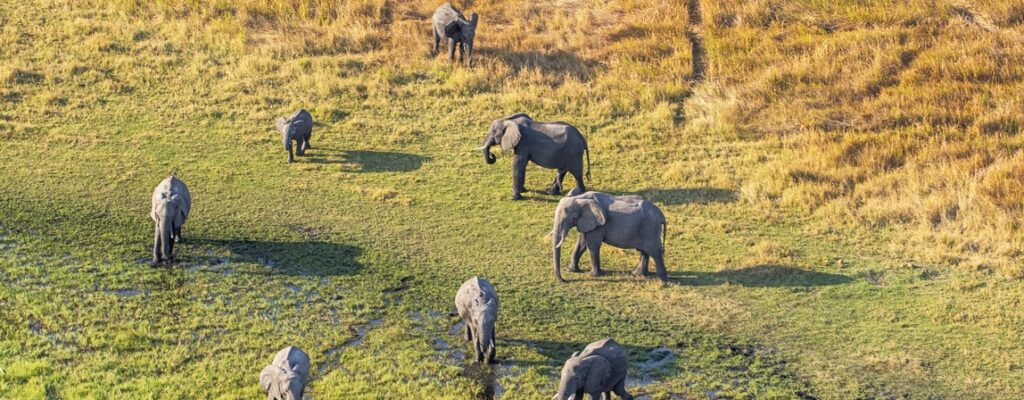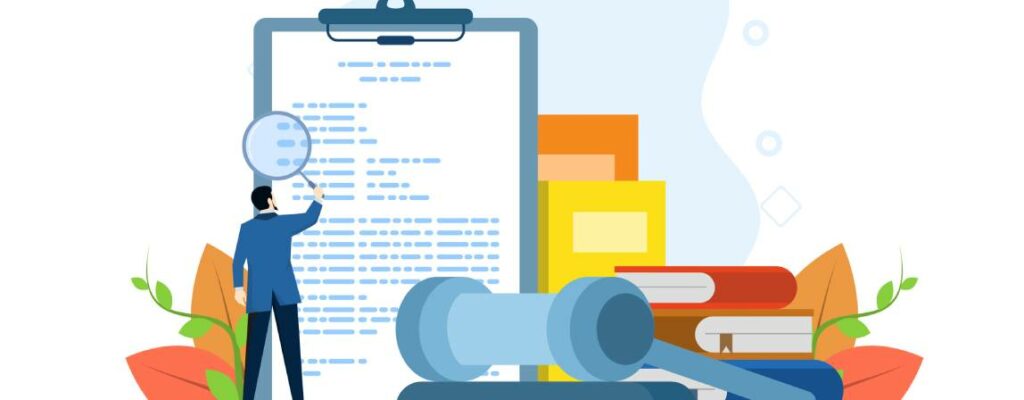Perspectives Posted on 2020-01-21 17:07:48
History of the OIE–IHSC public–private partnership
Keywords
Authors
Roland Devolz(1), Morgane Dominguez(2), Alain Dehove(3)*, Lydia Greve(4) & Isabelle Dieuzy-Labaye(3)
(1) International Federation of Horseracing Authorities (IFHA), Boulogne-Billancourt, France.
(2) Status Department, World Organisation for Animal Health (OIE).
(3) Financial Directorate, World Organisation for Animal Health (OIE).
(4) World Fund Unit, World Organisation for Animal Health (OIE).
* Corresponding author: alain.dehove@oie.int
The designations and denominations employed and the presentation of the material in this article do not imply the expression of any opinion whatsoever on the part of the OIE concerning the legal status of any country, territory, city or area or of its authorities, or concerning the delimitation of its frontiers and boundaries.
The views expressed in this article are solely the responsibility of the author(s). The mention of specific companies or products of manufacturers, whether or not these have been patented, does not imply that these have been endorsed or recommended by the OIE in preference to others of a similar nature that are not mentioned.
Background
In 2013, the International Equestrian Federation (Fédération équestre internationale – FEI), the world governing body for equestrian sports, and the International Federation of Horseracing Authorities (IFHA) joined forces to create the International Horse Sports Confederation (IHSC), the first formal vehicle for cooperation between the world’s governing bodies for equestrian sport. The formal agreement creating the IHSC was signed by HRH Princess Haya of Jordan, President of the FEI, and Mr Louis Romanet, President of the IFHA. The Confederation is the first formal alliance between the racing world (IFHA) and the FEI. Right from the start, the press release announcing the creation of the IHSC emphasised the importance of working closely with the OIE: ‘Both Federations will be fully cooperating to protect the welfare of the horse and to facilitate the international movement of horses in close liaison with the World Organisation for Animal Health’.
OIE–FEI
In 2002, the OIE signed a first general cooperation agreement with the FEI. The two organisations collaborated on various occasions, such as for the organisation of a joint conference (Mexico, 2011) and workshop (Panama, 2012) on the modernisation of the international movement of horses (for the Americas), as well as a brainstorming meeting (OIE, 2012) on facilitating the international movement of horses in the context of their participation in equestrian events and on the constraints associated with the international movements of horses.
On the occasion of the FEI General Assembly, held in November 2012, a financial agreement on collaboration between the OIE and the FEI was negotiated with the President of the FEI. The agreement, signed in January 2013, included among its provisions the participation of an FEI expert in the work of the OIE ad hoc Group on International Movement of Horses for Equestrian Sport, the funding of a veterinarian expert at OIE Headquarters (since then, two veterinarians recruited by the OIE have occupied this post successively) and scientific studies and other investigations designed to contribute to the work of the OIE, as well as support for the OIE’s PVS (Performance of Veterinary Services) Pathway, information seminars for new OIE Delegates, training for OIE national focal points and various communication activities.
These voluntary contributions from a private sector partner have been collected and managed through the OIE World Animal Health and Welfare Fund, a multiannual mechanism for collecting multi-donor voluntary contributions. The President of the FEI has participated in the meetings of the World Fund Advisory Committee in her capacity as a representative of a donor.
OIE–IFHA
A cooperation agreement between the OIE and the IFHA was signed in 2013.
Mirroring the collaboration put in place with the FEI, a financial agreement on collaboration between the OIE and the IFHA was negotiated with the President of the IFHA. This agreement, signed in September 2014, included among its provisions complementary co‑funding for the veterinarian expert initially provided for under the terms of the agreement with the FEI. The agreement also strengthened support for the implementation of scientific studies (diseases of horses) and the holding of regular regional thematic meetings. As in the case of the financial agreement with the FEI, these voluntary contributions have been collected and managed through the OIE World Fund, and the President of the IFHA has participated in the meetings of the World Fund Advisory Committee in his capacity as a representative of a donor.
OIE–IHSC
Since July 2016, the financial agreements with FEI and IFHA have been placed under the auspices of the IHSC. The new financial agreement on collaboration places particular emphasis on the concept of HHP (high health, high performance) horses, the implementation of scientific studies (diseases of horses, including validation of diagnostic tests and improvement of vaccines), as well as capacity building through regional workshops. The implementation of these activities is steered by an OIE–IHSC Technical Committee, which meets three times a year.
Discussion
The workshops and regional meetings organised jointly have had an impact on the OIE’s publications (standards, guidelines and manuals) in view of the intersection between the needs expressed by the professional federations and the scope of work of the OIE. It is also worth noting the multiannual nature of the partnership and the continuity and coherence of the joint actions planned. The provision of specific funding has also been an important factor, given that the OIE has had no other available resources to finance these activities.
The scientific studies undertaken have helped to provide sound evidence with a view to the revision of international standards. Some of these studies have led to the setting up of supplementary partnerships (with the private sector to develop a vaccine, without direct OIE involvement).
A veterinarian expert specially recruited by the OIE has played a crucial role in facilitating dialogue between the various parties and monitoring activities, including with OIE Reference Laboratories and Collaborating Centres, and other research teams called upon for the various studies.
https://doi.org/10.20506/bull.2019.2.2973




